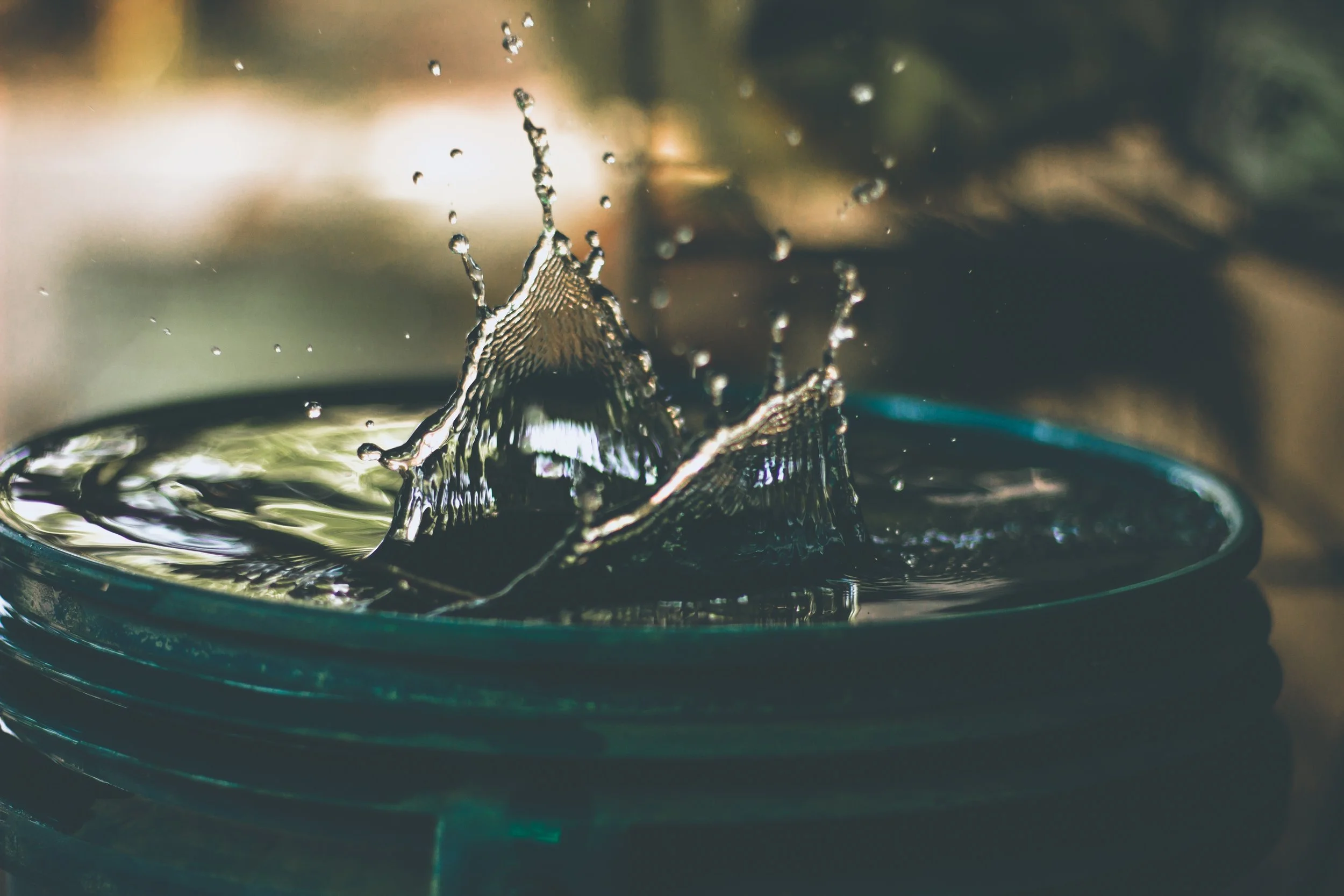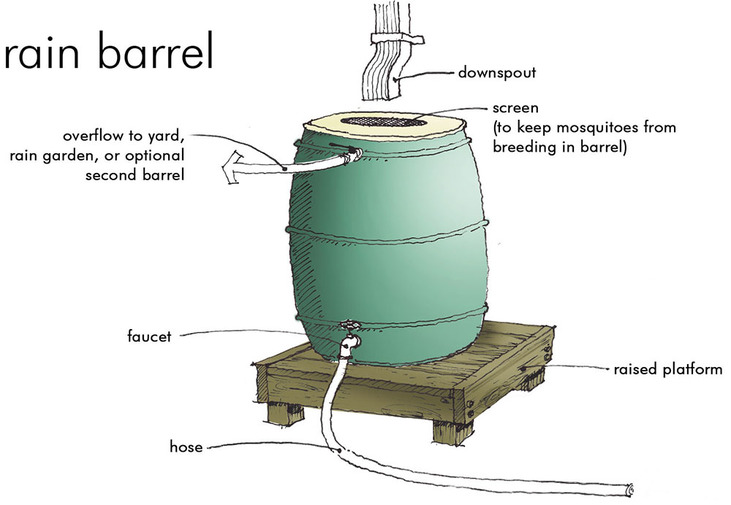In a winter season that seems set to bring more sunshine than rain, it is easy for rainwater collection to drop to the bottom of anyone’s priority list. Yet, long periods of warm dry weather punctuated with short intense storms make smart water use - especially if you have irrigation needs - all the more important.
Depending on how, and how much, irrigation water you use, several capture options can make sense.
Small (50gal) free standing rainwater tanks: Typically connected via a diverter from a residential downspout, these tanks or “rain barrels” are inexpensive and easy to move from one collection location to another. They can fill up quickly (roughly 0.1 inches falling on a 1000sf roof) and are handy to use for watering nearby plants, pots, or a tree.
Large (5000gal+) tanks: More expensive and requiring much more room in a yard (about 8 ½ ft diameter), they also need to be plumbed, filtered and maintained. That said, they can be connected to each other and to pumps, which for large properties may offer more bang for the buck especially through dry summers.
Portable water pillows/bladders: A relative newcomer to the market, these flexible flat “balloons” made of material similar to that used in rubber rafts come in a variety of sizes and shapes. Several manufacturers now make them with price tags that can vary widely.
The innovation here is that they lie flat, so they are well-suited for crawl spaces or under decks, thereby freeing up yard space. DIY hookups and pumps make the water available for landscape use. They can also be drained and rolled up for storage in the dry season.
For winters that bring rain via frequent small storms, the smaller tanks or barrels can work well to water during the gaps and then let them refill with the next rain. For years like this one (and likely future ones?), with infrequent larger storms, storage systems with large capacities become more important (and useful) to make it through even the “wet” season. Be sure to check with your local jurisdiction regarding permitting requirements.
As water rates continue to move toward reflecting the real cost of provided water, the benefits (for plants and for your wallet) of capturing rainfall become more evident. The important thing is to get started!




